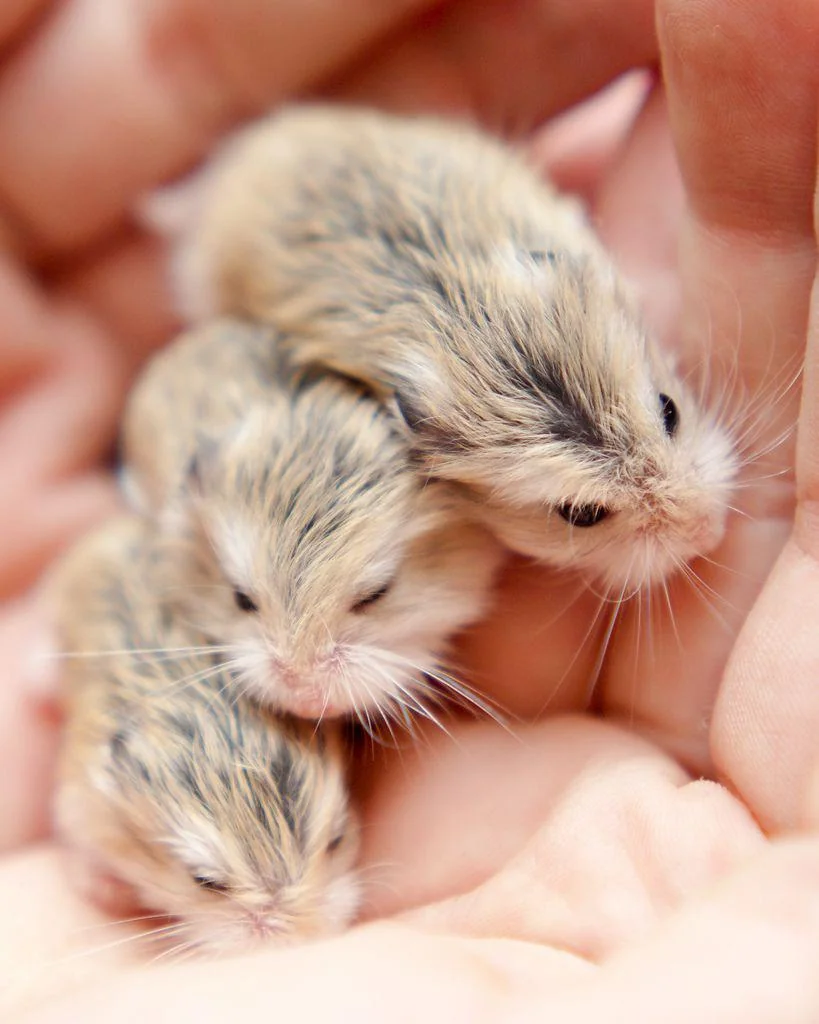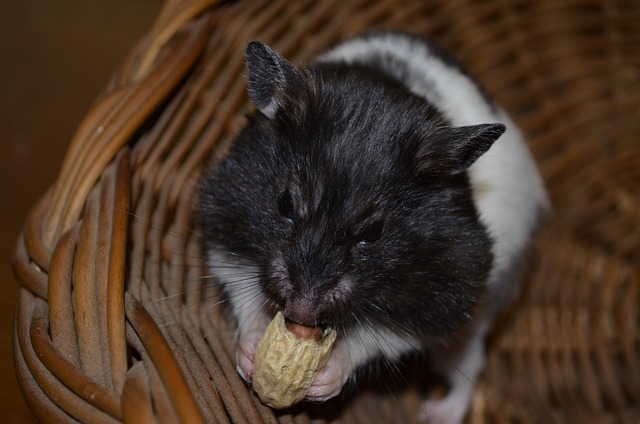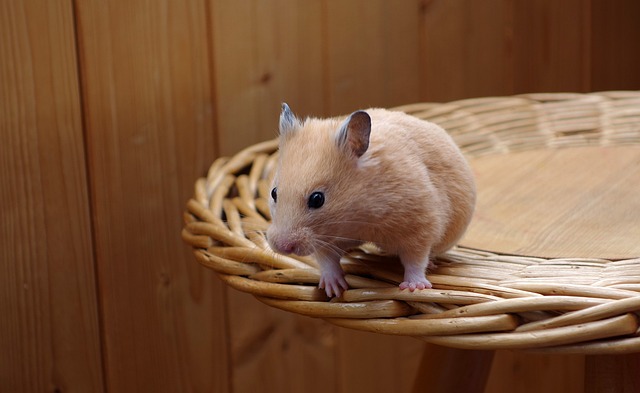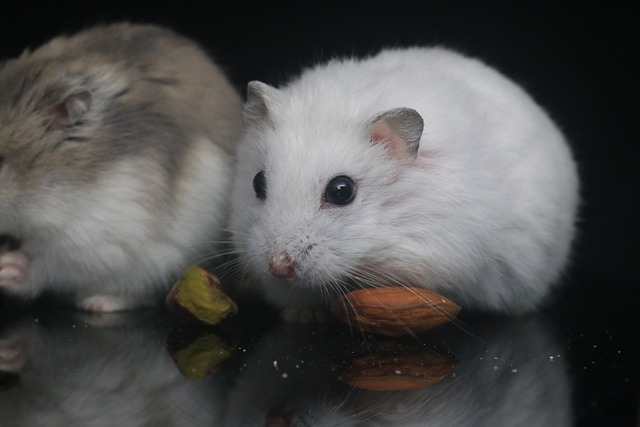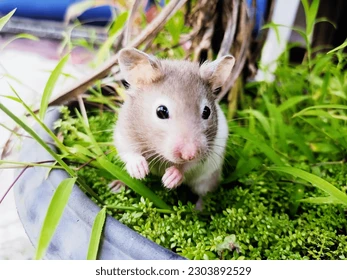What Hamsters Can Live Together – Hamsters.pk
Understanding Hamster Species and Their Compatibility
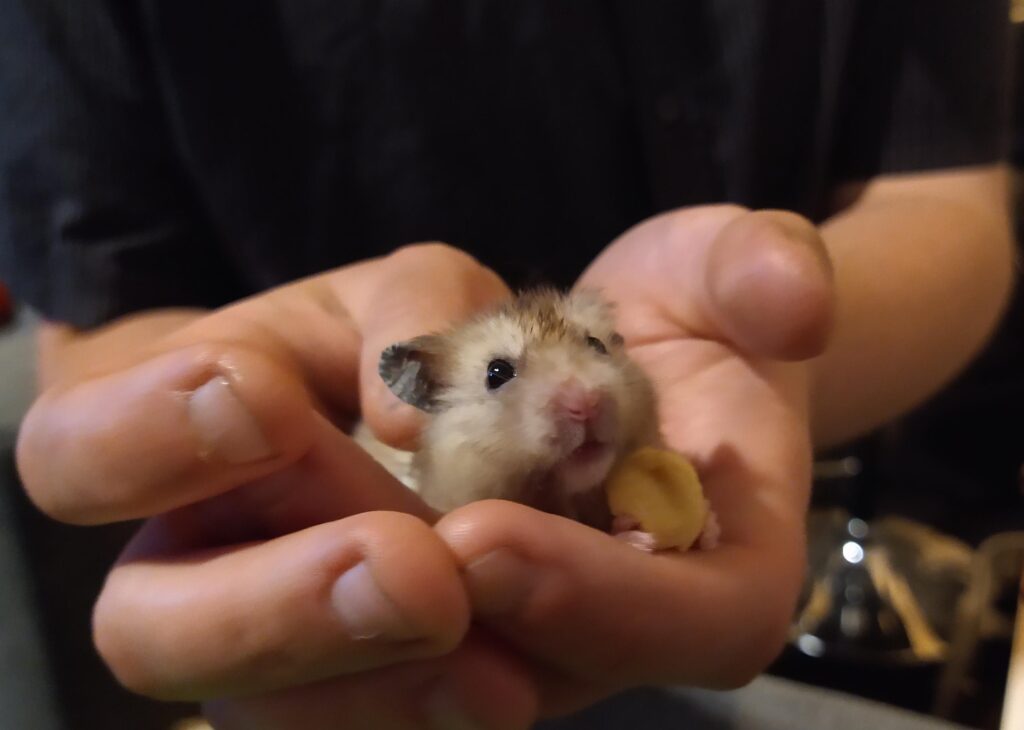
When considering keeping multiple hamsters together, it’s crucial to understand the various hamster species and their compatibility. Not all hamsters are suited to living with others, and even within the same species, individual personalities can play a significant role in determining successful cohabitation.
Solitary Species: Syrian Hamsters
Syrian hamsters, also known as golden hamsters, are the most common pet hamster species. These hamsters are solitary by nature and should never be housed together, as they are highly territorial and will likely fight, causing serious injury or even death. Each Syrian hamster requires its own cage, food, water, and toys to lead a happy and healthy life.
Social Species: Dwarf Hamsters
In contrast to Syrian hamsters, several species of dwarf hamsters are more social and can potentially live together under the right circumstances. These species include:
- Campbell’s Dwarf Hamsters: These small hamsters can be housed in same-sex pairs or groups, provided they are introduced at a young age and have compatible personalities.
- Winter White Dwarf Hamsters: Similar to Campbell’s, Winter Whites can live in same-sex pairs or groups if introduced early and have complementary temperaments.
- Roborovski Dwarf Hamsters: Roborovski hamsters are the smallest and most social of the dwarf hamster species. They can thrive in same-sex groups, provided they have a large enough habitat and are introduced at a young age.
Factors Influencing Compatibility
Even within the social dwarf hamster species, several factors can impact the success of cohabitation:
- Age: Hamsters should be introduced to each other at a young age, ideally before reaching sexual maturity, to increase the chances of successful bonding.
- Gender: Same-sex pairs or groups are recommended to prevent breeding and reduce the likelihood of aggression.
- Personality: Individual hamster personalities can vary, and some may be more dominant or aggressive than others, making them incompatible with their cage mates.
- Habitat Size: Providing a large enough habitat with multiple hiding spots, food bowls, and water sources can help reduce territorial disputes and promote a harmonious living environment.
Monitoring and Separation
When housing multiple hamsters together, it’s essential to closely monitor their behavior and watch for signs of aggression or bullying. If problems arise, be prepared to separate the hamsters into individual cages to ensure their safety and well-being.
In conclusion, understanding the compatibility of different hamster species is vital when considering keeping multiple hamsters together. By providing the right environment, introducing them at an appropriate age, and monitoring their interactions, you can create a harmonious home for your social dwarf hamsters while ensuring that solitary Syrian hamsters have their own dedicated spaces.
Factors to Consider When Housing Multiple Hamsters
When deciding to house multiple hamsters together, several crucial factors must be taken into account to ensure a safe, healthy, and harmonious living environment. By carefully considering these aspects, you can create a suitable habitat that caters to the specific needs of your furry companions.
Species Compatibility
The first and most important factor to consider is the compatibility of the hamster species. Not all hamsters are suited to living with others, and housing incompatible species together can lead to serious fights, injuries, or even death. It’s essential to research the social nature of the specific hamster species you plan to keep and only house compatible species together.
Age and Gender
When introducing multiple hamsters, it’s crucial to consider their age and gender. It’s best to introduce hamsters to each other at a young age, preferably before they reach sexual maturity. This early introduction allows them to form bonds and establish a hierarchy without the added complication of hormonal aggression.
Housing same-sex pairs or groups is highly recommended to prevent unintended breeding and reduce the likelihood of territorial disputes. Keep in mind that even same-sex pairs can experience aggression, so close monitoring is necessary.
Personality and Temperament
Individual hamsters, even within the same species, can have varying personalities and temperaments. Some hamsters may be more dominant, territorial, or aggressive than others, making them incompatible with potential cage mates. Observe your hamsters’ behavior and personality traits before attempting to house them together.
If you notice signs of aggression, such as chasing, biting, or excessive squeaking, it’s best to separate the hamsters to prevent further conflict and ensure their well-being.
Habitat Size and Design
Providing a spacious and well-designed habitat is crucial when housing multiple hamsters. A larger cage allows each hamster to establish its own territory, reducing the likelihood of territorial disputes. Ensure that the cage has ample floor space, multiple levels, and plenty of hiding spots, such as tunnels, houses, and nesting areas.
Include multiple food bowls, water sources, and exercise wheels to prevent competition over resources. By offering each hamster its own set of essentials, you can minimize potential conflicts and promote a more harmonious living environment.
Gradual Introduction and Monitoring
When introducing hamsters to a shared living space, it’s essential to do so gradually. Begin by placing the hamsters in separate cages close to each other, allowing them to become accustomed to each other’s scent and presence. Slowly introduce them to a neutral play area under close supervision, watching for any signs of aggression or distress.
Once the hamsters are housed together, regularly monitor their behavior and interactions. Watch for signs of bullying, excessive grooming, or wounds, which may indicate an unhealthy relationship. If necessary, be prepared to separate the hamsters into individual cages to ensure their safety and well-being.
Ongoing Care and Attention
Housing multiple hamsters together requires ongoing care and attention. Regularly clean the cage, provide fresh food and water, and offer engaging toys and activities to keep your hamsters stimulated and content. Monitor their health closely, and if you notice any signs of illness or injury, consult with a veterinarian experienced in small animal care.
By considering these factors and providing a suitable environment, you can create a harmonious and enriching living situation for your social hamsters. Remember, the well-being of your pets should always be the top priority when making decisions about their housing arrangements.
Successful Hamster Pairings: Which Species Can Coexist?
When it comes to keeping pet hamsters, it’s essential to understand which species can successfully coexist in pairs or groups. While some hamster species are solitary by nature and should always be housed alone, others are more social and can thrive in the company of their own kind. In this article, we’ll explore the different hamster species and their compatibility for living together.
Syrian Hamsters: Solitary Dwelling
Syrian hamsters, also known as golden hamsters, are the most common pet hamster species. These hamsters are solitary creatures and should never be housed together, regardless of age, gender, or size. Syrian hamsters are highly territorial and will fight aggressively if forced to share their living space, often resulting in serious injuries or even death.
Each Syrian hamster should have its own spacious cage, complete with a wheel, hiding spots, and toys. Providing individual habitats ensures that these solitary hamsters can lead happy, stress-free lives without the threat of conflict.
Dwarf Hamsters: Social Compatibility
In contrast to Syrian hamsters, several species of dwarf hamsters are more social and can successfully live in pairs or groups under the right circumstances. The most common social dwarf hamster species include:
- Campbell’s Dwarf Hamsters: These tiny hamsters can be housed in same-sex pairs or groups if introduced at a young age, preferably before reaching sexual maturity. Campbell’s dwarf hamsters have a relatively high social compatibility, but individual personalities can still vary.
- Winter White Dwarf Hamsters: Similar to Campbell’s, Winter White dwarf hamsters can coexist in same-sex pairs or groups when introduced early and provided with a spacious habitat. These hamsters are known for their social nature and can form strong bonds with their cage mates.
- Roborovski Dwarf Hamsters: As the smallest and most social of the dwarf hamster species, Roborovski hamsters can thrive in same-sex groups. These energetic hamsters require a large habitat with plenty of space to run, play, and explore together.
Factors for Successful Cohabitation
While dwarf hamsters are generally more social than their Syrian counterparts, successful cohabitation depends on several factors:
- Early Introduction: Hamsters should be introduced to each other at a young age, ideally before reaching sexual maturity, to increase the chances of forming a strong bond and reducing territorial aggression.
- Same-Sex Groupings: Housing same-sex pairs or groups is crucial to prevent unintended breeding and minimize hormonal aggression. Avoid mixing genders, as this can lead to conflicts and unwanted litters.
- Spacious Habitat: Provide a large, well-equipped habitat with multiple levels, hiding spots, and separate food and water sources to ensure each hamster has its own space and resources, reducing the likelihood of territorial disputes.
- Monitoring Behavior: Regularly observe your hamsters’ interactions and watch for signs of aggression, bullying, or injury. If conflicts arise, be prepared to separate the hamsters into individual cages to ensure their safety and well-being.
Conclusion
When considering housing multiple hamsters together, it’s crucial to understand the social compatibility of different species. Syrian hamsters are solitary and should always be housed alone, while dwarf hamsters, such as Campbell’s, Winter Whites, and Roborovskis, can successfully coexist in same-sex pairs or groups when introduced at a young age and provided with a suitable habitat. By carefully selecting compatible species and creating a nurturing environment, you can ensure your social hamsters lead happy, harmonious lives together.
Creating a Harmonious Environment for Cohabiting Hamsters
When housing multiple hamsters together, creating a harmonious living environment is essential for their well-being and happiness. By carefully designing their habitat and providing the necessary resources, you can foster a peaceful coexistence among your furry companions. In this article, we’ll explore the key elements of creating a harmonious environment for cohabiting hamsters.
Choosing the Right Cage
The foundation of a harmonious hamster habitat is a spacious and well-designed cage. When selecting a cage for multiple hamsters, consider the following factors:
- Size: Provide a cage that offers ample floor space and multiple levels to ensure each hamster has enough room to establish its own territory. A larger cage reduces the likelihood of territorial disputes and promotes a more peaceful living environment.
- Multiple Compartments: Look for cages with separate compartments or sections, allowing each hamster to have its own designated area for sleeping, eating, and playing. This separation helps reduce competition for resources and minimizes potential conflicts.
- Ventilation: Choose a cage with good ventilation to ensure proper air circulation and prevent the buildup of harmful ammonia from urine and feces. Adequate ventilation is crucial for maintaining a healthy living space for your hamsters.
Providing Essential Resources
To create a harmonious environment, it’s essential to provide your cohabiting hamsters with multiple resources to minimize competition and ensure each hamster has access to the necessities. Consider the following:
- Food and Water: Offer separate food bowls and water bottles for each hamster to prevent dominance issues and ensure equal access to nourishment. Scatter feeding can also encourage natural foraging behaviors and reduce the likelihood of food-related conflicts.
- Hiding Spots: Include multiple hiding spots, such as tunnels, houses, and nesting areas, to provide each hamster with a secure place to rest and retreat. Having ample hiding options reduces stress and allows hamsters to establish their own territories within the shared space.
- Exercise Wheels: Provide individual exercise wheels for each hamster to ensure they can engage in physical activity without competing for access. Exercise is crucial for maintaining their physical and mental well-being.
Enriching the Environment
Creating an enriching environment is key to promoting a harmonious living space for your cohabiting hamsters. Consider incorporating the following elements:
- Toys and Puzzles: Offer a variety of toys and puzzles to keep your hamsters mentally stimulated and engaged. Rotating toys regularly helps prevent boredom and reduces the likelihood of territorial disputes.
- Tunnels and Bridges: Include tunnels, bridges, and other interconnected pathways to encourage exploration and provide additional space for your hamsters to navigate and play together.
- Chew Toys: Provide safe, chewable objects such as wooden blocks or apple branches to satisfy your hamsters’ natural gnawing instincts and promote dental health. Ensuring each hamster has access to chew toys can help reduce stress and prevent destructive behaviors.
Regular Cleaning and Maintenance
Maintaining a clean and hygienic environment is crucial for the health and well-being of your cohabiting hamsters. Regularly clean the cage, replacing bedding and washing accessories to prevent the buildup of harmful bacteria and odors. A clean living space reduces stress and minimizes the risk of territorial aggression.
Monitoring and Addressing Conflicts
Even in a well-designed and enriching environment, conflicts may still arise among cohabiting hamsters. Regularly monitor their interactions and watch for signs of aggression, such as excessive chasing, biting, or squeaking. If persistent conflicts occur, be prepared to separate the hamsters into individual cages to ensure their safety and well-being.
By creating a harmonious environment with ample space, essential resources, enrichment opportunities, and regular maintenance, you can foster a peaceful and nurturing living situation for your cohabiting hamsters. Remember, the key to success lies in understanding their needs, providing a suitable habitat, and remaining attentive to their behaviors and interactions.
